| Midsize SUV; Built in USA |
|
|
| Good condition price range: $1,600 – $4,400* |
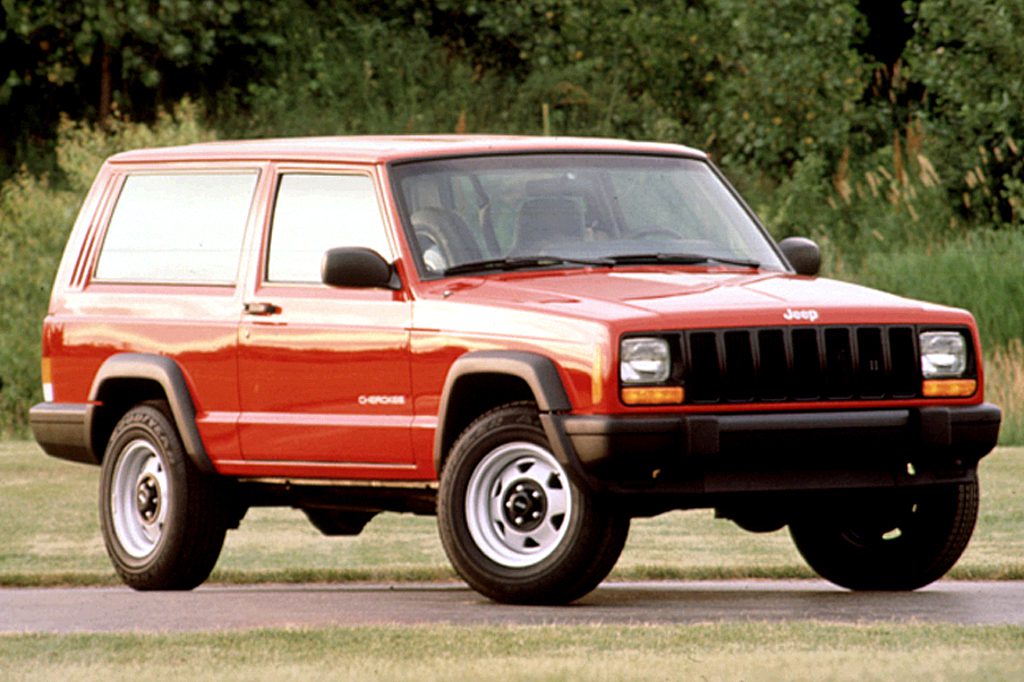
1997 Jeep Cherokee
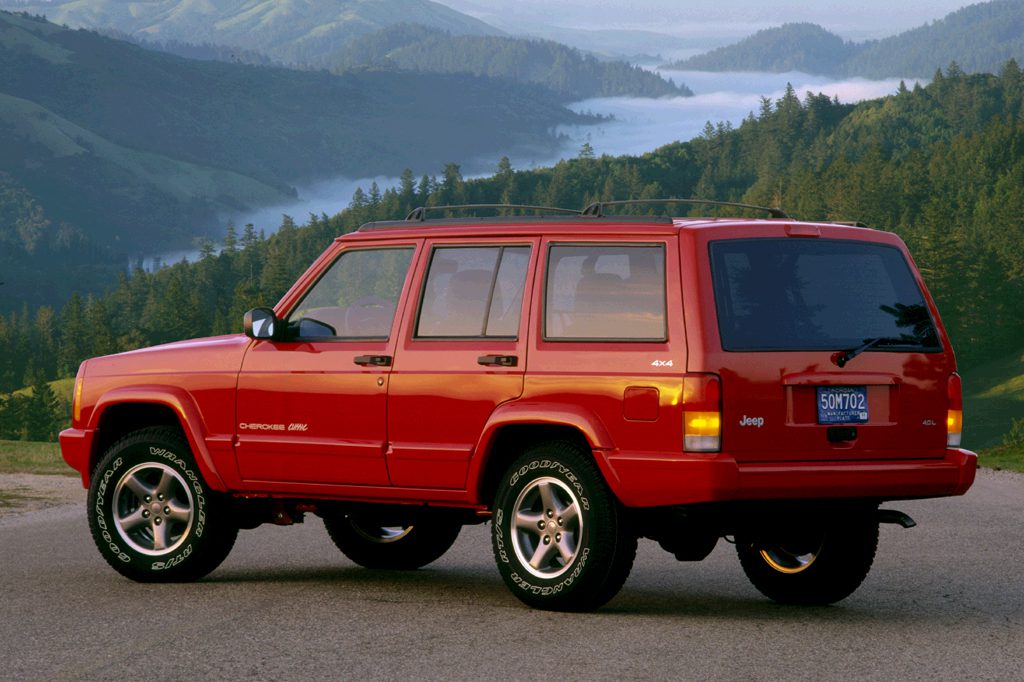
1998 Jeep Cherokee
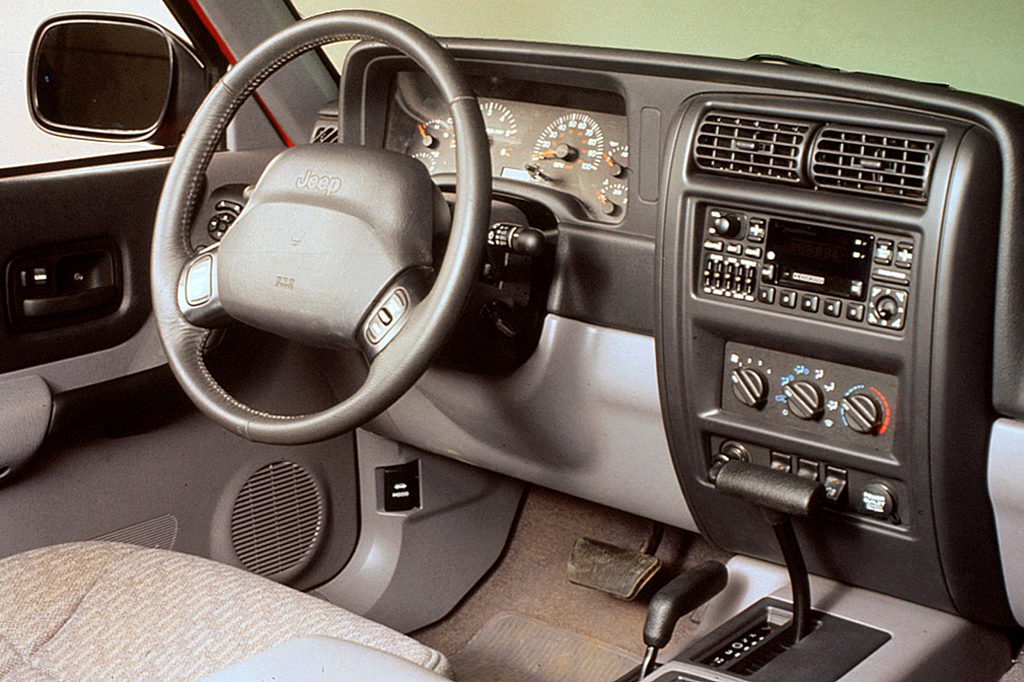
1997 Jeep Cherokee interior
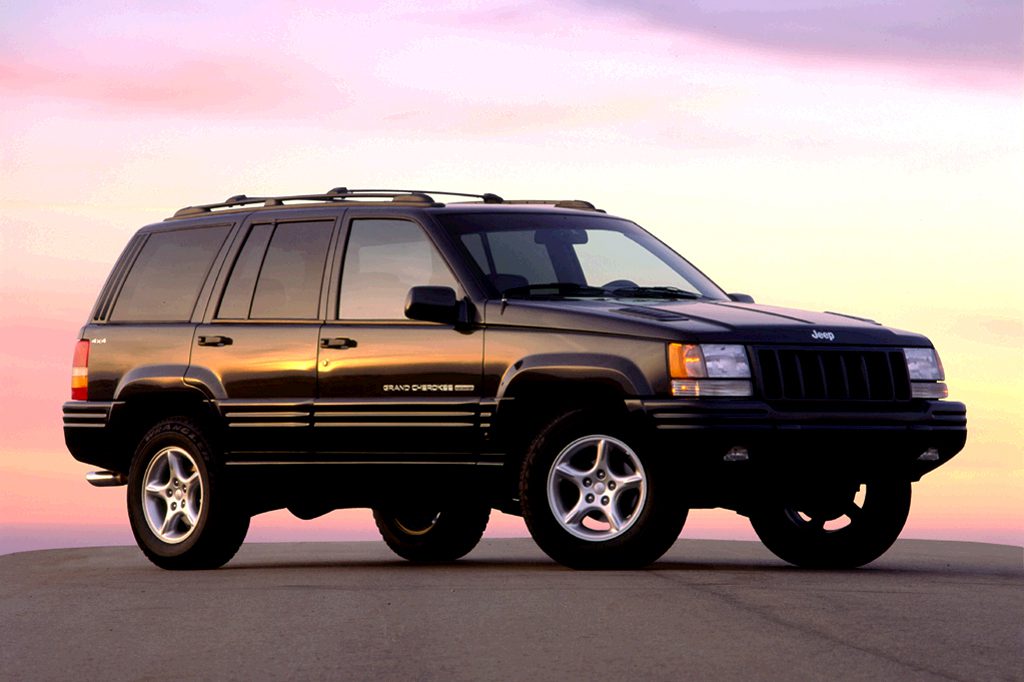
1998 Jeep Cherokee
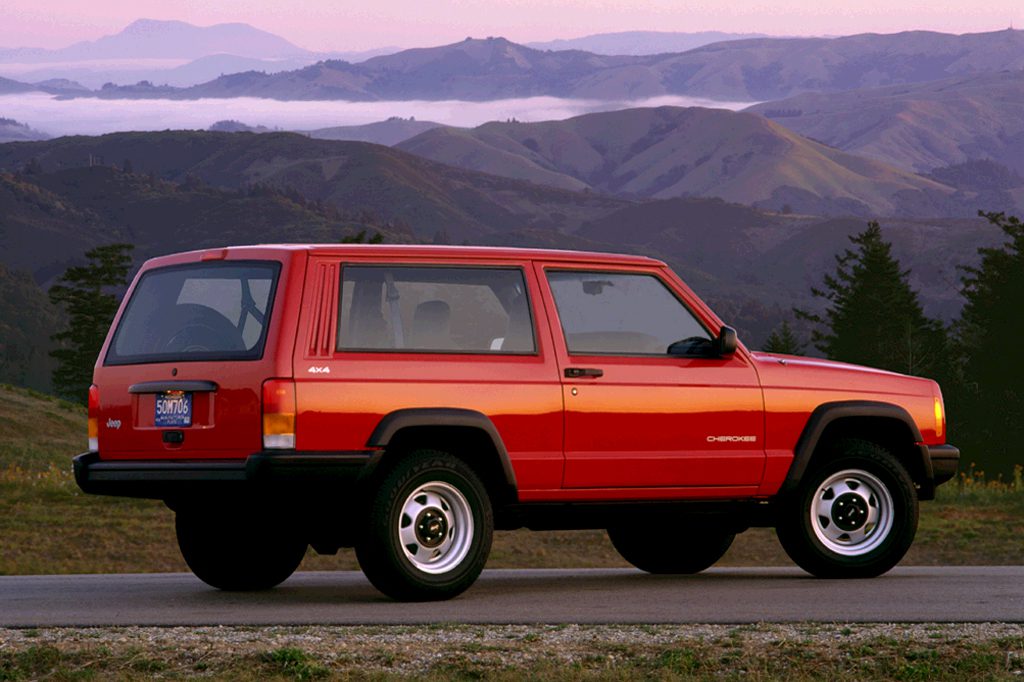
1998 Jeep Cherokee
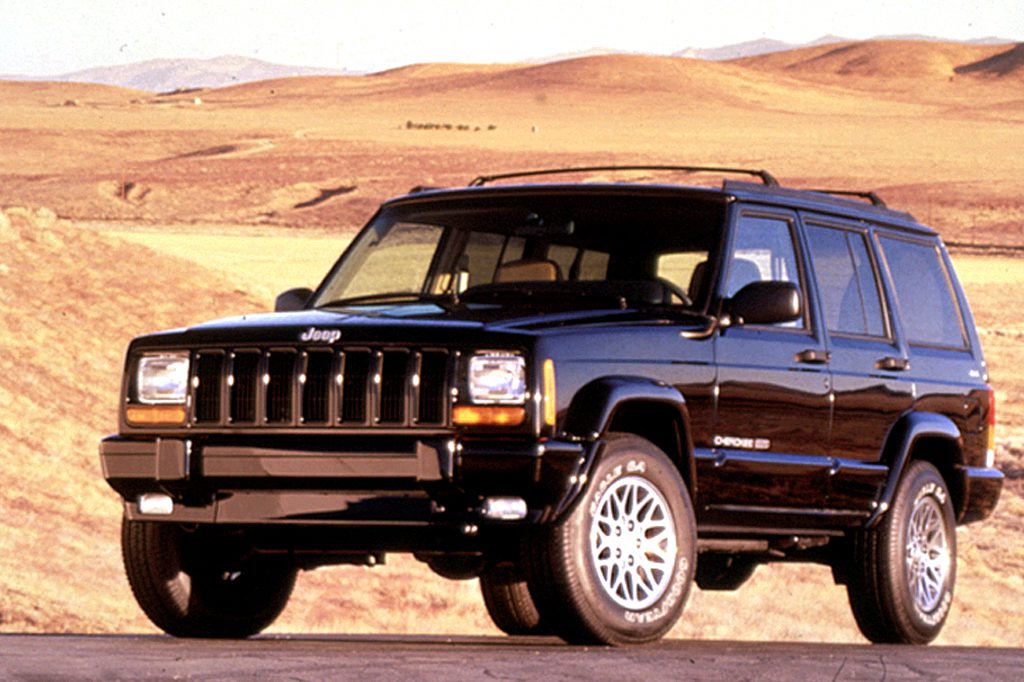
1997 Jeep Cherokee
| Pros: |
|
| Cons: |
|
Convenient 4-wheel-drive systems, commendable off-road capability, and civilized on road manners–for less than a Grand Cherokee or an Explorer–make the Cherokee an above average value. Despite an aging design and strong competition, Cherokees sold well in the late ’90s and are not too expensive today unless you go for a fully equipped model. Still, Cherokee is behind the times in room, ride, and refinement.
Overview
Subtle styling revisions for the 1997 version of the Cherokee wagon did not disturb the popular model’s well-established character. Though substantial, the design alterations enhanced but did not alter the overall slab-sided look. Up front, the grille and front fascia were new, as was the bumper. Bodyside moldings were revised, and wheel arches now flowed into the front and rear bumpers. A new stamped-steel liftgate had hidden hinges, a new outside handle, and an inside pull strap.
Inside, a revamped interior now included a passenger airbag, as well as one for the driver. Sound insulation was increased. A new central panel housed climate controls and the radio. New lighted power mirrors and power-window switches were installed. A new overhead console contained a storage compartment. Also new were a 5-function trip computer, and a center console with cupholders.
The Cherokee was available in base SE form with a 4-cylinder engine, as the midlevel Sport, or in top-of-the-line Country guise (the latter offered only as a 4 door model). Powertrains were unchanged. The 4-cylinder engine came only with manual shift. Standard in the Sport, the 4.0-liter inline six could have either the standard 5-speed manual gearbox or a 4-speed automatic transmission. Country wagon had the 4.0-liter engine and automatic only. Antilock braking was optional with the 6-cylinder engine.
Cherokees came with rear-wheel drive or a choice of 4-wheel-drive systems. Command-Trac was a part-time system for use only on slippery surfaces. Available only with an automatic transmission, SelecTrac 4-wheel drive was a full-time system that could also be used on dry pavements.
Yearly Updates
| 1998 Cherokee A new model and two new badges arrived for ’98. Model choices now included the SE, Sport, and a new Classic (positioned above the Sport in price and features). The Cherokee Limited (replacing the Country) was now a Classic option group, not a separate model. Only the SE and Sport came in 2-door form. The 4-cylinder engine could team with a 3-speed automatic transmission. as an option instead of the usual manual gearbox. Engineering changes included a quieter steering gear and aluminum radiator. |
| 1999 Cherokee Minor appearance revisions to the Sport model were among the few changes for 1999. Sport models got body-colored exterior trim (sand-colored models got matching alloy wheels). New options included heated front seats for Classic models, and Chrysler’s Sentry Key theft-deterrent system for Sport and Classic. |
| 2000 Cherokee Now considered a separate model rather than an option package, the Cherokee Limited got fancier this season. Special features included a chrome grille and headlight surrounds, and a chrome rear license-plate brow. The 6-cylinder engine was revised for quieter running and reduced exhaust emissions, while the automatic transmission was modified to yield smoother shifts. New standard features included brighter headlights (also said to be longer-lasting), a cassette player, and rear child-seat anchors. Newly styled 16-inch wheels went on the Classic and Limited. Now in its 17th year on the market, Cherokee would see only one more season before giving way to a new Liberty model, arriving for 2002. |
| 2001 Cherokee Cherokee dropped its 4-cylinder engine and base SE and uplevel Classic models for 2001. Both remaining models gained rear child-seat anchors. |
